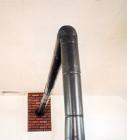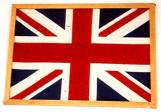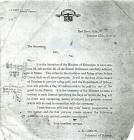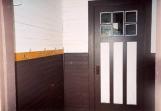14
LampsThe most common lights used for evening activities was the gas lantern. The earlier models had two mantles. You pumped air in to the tank with a small cylindrical pump - then lit the mantles. The mantles were very fragile and many a time a moth would fly into them and they would be destroyed. The next model came out with a glass globe that encased the mantles and a built-in pump. These are still used today on camping trips. At home, students would do their homework by another type of lamp. The base was filled with coal oil. It had a wick that you lit and a glass globe to fit over the wick. If you turned the wick up too high, you had a job of cleaning the globe as the glass would be covered with dark soot. When an aladdin lamp was used it was much easier on the eyes.
16
Wood StoveSouth Fork 1937: There was a little wood stove in the middle of the room which kept us warm. One of the pupils did the janitor work, started the fires in the morning, and carried drinking water from the Raven river. Each child had their own drinking cup.
We all worked in harmony together.At the rear of the room was a box stove that provided heat occasionally. On a very cold day in winter when the temperature was -40F, there was little heat to be had. The wealth of the community was a determining factor in how fancy the heater was in the school.
17
JANITORIAL DUTIESRicinus: For one year or so I worked as janitor of the school. For $5.00 a month, I arrived early to bring in the wood and start the fire. I had to clean the boards and pound the brushes outdoors. I threw green dust control granules on the floor and swept it up. With the money I earned, I bought my first wristwatch. Submitted by Phyllis Vincey Stronach
Hazel Dell: The janitor work was done by certain students for a small wage. The splitting of kindling was part of the job, then making those fires in order for the school to be heated for children coming in with frozen hands and feet. Some came as far as 4 miles away. Submitted by Josie Shippelt, Valerie Engman, Anne Burns
Dovercourt: We were janitors for a couple of years. I remember one night there was a blizzard and it was very cold the next morning. Mother said I should go and get the fire going in case any of the children went to school. My horse had to lunge to get through the drift which was up to his chest. The teacher was the only one to come that day.
Submitted by Phyllis Wickens Auger
Dovercourt #2: Two boys were in charge of lighting up the "barrel stove" bringing in the wood, and carrying out the ashes. It was quite comfortable as I don't recall finding it too cold or drafty. Occasionally during the winter on a very cold day, we moved the desks closer to the stove. At lunch time, the children often toasted their sandwiches on the top. The nice smell of home baked bread drifted around the room. There were many blueberry and moose meat sandwiches. Submitted by Marcella Bertagnolli
James River School: As a young man in 1945-48, I was hired to be the janitor as we lived closest to the school and could go early to start the fire so that students who had a long way to travel could warm up quickly when they arrived. My duties were to start the fire, carry in wood and take ashes out, sweep the floor, and clean blackboard brushes. I was paid $6.00 a month in 1945. In 1948 I received $6.50, then $7.00, and finally $7.50. I took my wages home and gave them to my mother, and these wages helped the family buy a big bag of flour, with enough left over for a special treat for me.
Submitted by John Stone
Rich Hill: (From a teacher's point of view) It was a common practice in those days to have the teacher do the janitor work as rental for the teacherage, or to pay someone else to do the janitor work. I usually paid a student to sweep the floors and to dust, but I always did the fires myself. Submitted by Ardis Branall
19
STOVE PIPEThe stove pipe stretched the length of the room so as to provide extra heat, but often as not, the pipe simply rose directly from the stove to the chimney.
21
BLACKBOARDIn the early days a black slate board was used individually by the students. A blackboard was erected at the front of the room. Later on, the blackboard was replaced with a greenboard. Chalk came in white, then in yellow, and eventually in colors. Felt brushes were used to remove the writing on the blackboard. These had to be taken outside and hit against one another, or on a hard surface to remove the chalk dust. Sometimes this chore was used as a punishment.
23
FLAGAbove the blackboard hung the flag which was the British Union Jack in the era of the one-room schools.The students pledged their allegiance
to the flag every morning before class began.
25
Red Deer,AltaOctober 27,1919
The Secretary S.D
Sir,-
It is the intention of the Minister of Education to have section 95,sub-section 26,of the School Ordinance carefully adhered to in future. This refers to the provision and flying of the British Union Jack on all school grounds. It will be the duty of the Board of Trustees to provide a flag-pole,and the Department of Education will provide a flag of uniform size to be paid for out of the district grant.It is the intention of the Minister to issue a booklet to each District specifying the days on which the flag will be flown and containing matter of historic and patriotic interest which will be read in connection with the ceremony.
I trust that you will lend me your hearty co-operation in this matter and for that purpose please answer the following questions at your earliest possible convenience.
Your obedient servant,
A.R GIBSON
Inspector of Schools
27
COAT ROOMMost schools had a little anti-room with rows of hooks where the children could hang their coats.Some schools had a shelf over the hooks for your lunch pail.





